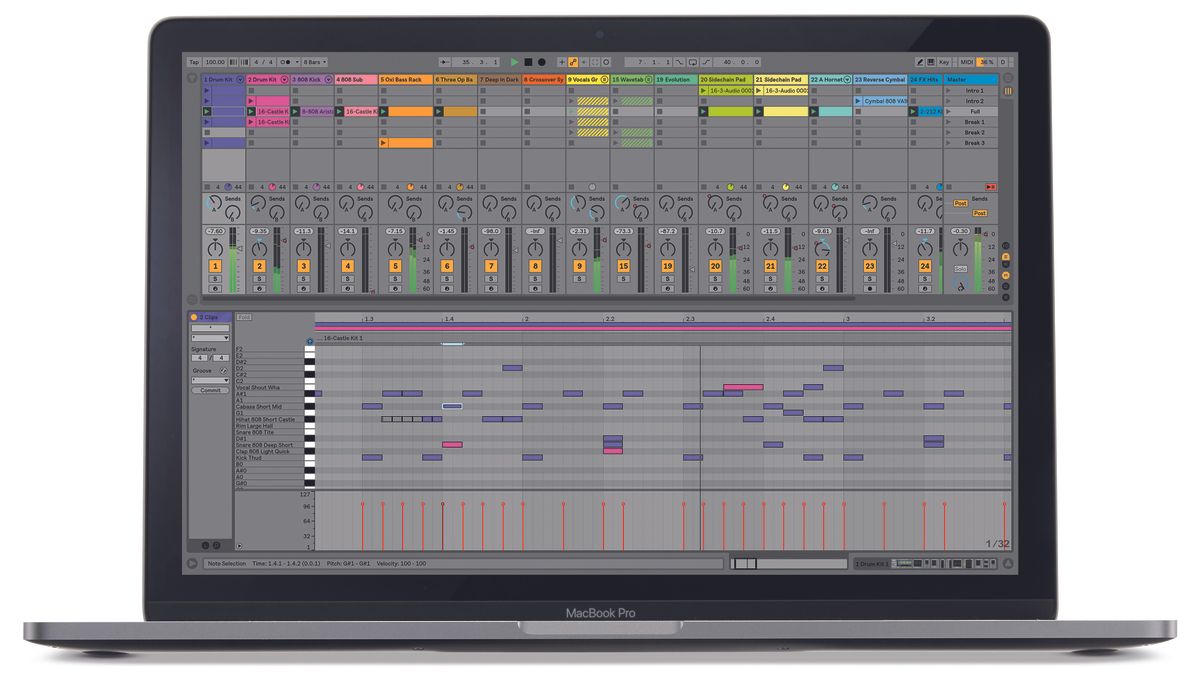

- #BEST INTERFACE FOR LOGIC PRO X UPGRADE#
- #BEST INTERFACE FOR LOGIC PRO X SOFTWARE#
- #BEST INTERFACE FOR LOGIC PRO X MAC#
Plus you can build up tracks from the library of samples that are included or play in your own parts using the built in software instruments. Garageband lets you record from your mic, edit the audio and add effects. This is Apple’s entry level Digital Audio Workstation (DAW) package, but it’s by no means lightweight.
#BEST INTERFACE FOR LOGIC PRO X MAC#
If you are a mac user, chances are that you already have their Garageband software. Need more inputs? Checkout the Duet or Quartet versions (around £500/£1000). You can also connect either your main microphone or a line input from a guitar, keyboard or EWI. The “One” is also really compact, plus it has it’s own built in mic that you can use for skype calls, and it will work with your iPad. Apogee OneĪpogee products are known for their great quality signal conversion. Here are some audio interface options to consider: The Avid Fast Track Solo and Apogee One Avid Fast Track SoloĬomes with Pro Tools Express software so you can get started right out of the box. With that in mind, my personal opinion is that you should try to get the best quality interface you can afford. Most sax players will find they really only need to record a single mic at a time too. a band) I will go to a recording studio which these days can be quite inexpensive, and has far more space and resources than my home studio. If I need to record more things at once (e.g. I’m generally just recording my sax or my voice. In my studio for example, I never needed to record more than one mic at a time. It’s important though to think realistically about what your needs are. Also, whereas some interfaces will let you record from just 1 or 2 microphones simultaneously, with others you can record 8 or multiple mics at once. Generally speaking, the more expensive audio interfaces do a better job of getting the recorded sound into the computer without colouring or changing the sound. Like with microphones, these vary greatly in price and features. This piece of kit is important because it converts the signal from your microphone to a digital signal your computer can understand.

Unless you are using a USB mic that connects directly to the computer, you will need an audio interface. A digital audio workstation (DAW) software package like Logic Pro is the heart of a simple home recording setup for saxophone players. Check out our shoot-out comparison between the AKG and NT1-A. It’s also probably the last mic you would need to buy for your sax. If your budget can stretch to a great industry standard “studio quality” microphone that’s tried and tested, then this is the one for you. It’s great value for money and has the features you see on a much more expensive mic for entry level money. There is also a USB version of this mic that will connect directly to your computer without the need for an audio interface. This is an entry priced cardioid condenser mic. It’s been around forever so it’s proven, pretty cheap, and basically indestructible. This is considered the standard gigging mic for sax players whether on alto or baritone, soprano or tenor and also works great for recording (although I personally prefer the SM-58). Like mouthpieces, microphones are very personal but here are some great proven choices to consider: Classic sax mic choices: Shure SM57, Røde NT1-A and AKG 414. There are endless options for microphones when recording saxophone these days, with the long established brands and an endless stream of new products from Chinese manufacturers (check out our review of the surprisingly good iSolo wireless mic from CloudVocal ). So, there are generally three elements to a small home or a room sound recording setup: The dynamic mic, the interface, and the computer + software. And most of us have a computer already, which is often the most expensive part of the setup. For this article I will be focussing on computer based setups because I think they offer the most flexibility. There are also standalone recording devices on the market but generally these are either specialist tools, or designed specifically for just recording audio. You can also record along with backing tracks, add effects, and edit your audio or build up your own tracks entirely. This means you can do so much more than just record your sax. Most home studio setups are based around a laptop or desktop computer which gives you a lot of processing power.
#BEST INTERFACE FOR LOGIC PRO X UPGRADE#
It’s often best to spend less and then look to upgrade down the track as your skills develop. In fact, you only need a couple of main pieces of kit to get started. Like many things, you can spend a little or a lot (and I mean A LOT!) on gear but to get started it doesn’t need to cost a fortune. Here is a quick guide to what you need to get started on recording saxophone. But if you really want to get the most out of it, you’ll need a home studio recording setup.


 0 kommentar(er)
0 kommentar(er)
